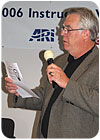
Well, here we are 25 years later, and I'm the one complaining about electronically commutated motors (ECMs) variable-speed blowers, 13 SEER air conditioning units, and R-410A. Life has a way of evolving in circles, and the HVACR business is no exception.
As the training director for a large residential and light commercial HVAC company, I am on the forefront of getting our techs the newest and best information with which to do their jobs. We have difficulty getting the correct information from our manufacturers in a timely manner - and I suspect that is partly because they haven't completely compiled it yet with the new equipment.
I still have 13 SEER condensing units being packed with instruction sheets talking about charging by superheat. We have 13 SEER evaporator coils equipped with thermal expansion valves (TXVs), and no one can explain how much superheat I'm supposed to have, or why I'm getting 28°F of superheat on a system that is supposedly charged correctly.
As R-410A becomes more prevalent, how exactly am I supposed to clean the existing line set before converting over? These are the frustrating issues that the manufacturers haven't been able to adequately address with the contractor base as of yet, but we still have to do our jobs of installing and servicing this equipment.
START YOUR OWN TRAINING PROGRAM
I can only imagine the frustration level of a technician working in the field with only the manufacturer's representative to lean on. In our company, we established a full-blown training department, partly because the information we received from other sources was incomplete, limited to their particular application, and sometimes just plain incorrect.We now have a team of senior-level technicians, all holding multiple North American Technician Excellence (NATE) certifications, who work together to fill in these gaps in information. If we can't get the correct information from the manufacturer, then we decide collectively on how to move forward. With senior-level technicians concerning themselves with "How do we explain this to the guys?" you would be surprised at how good an approach we come up with.
It is not unusual for our equipment wholesaler's technical guy to ask us about quirks and problems that we have already encountered.
In the last 18 months or so, I have been involved in numerous projects addressing airflow in residential applications. Few residential installations have ever been subjected to any real airflow measurement and balancing, and we recognize that airflow is key to the proper operation of any system. We have started to measure, and we are finding that few of the blowers in the equipment that we use actually produce the airflow against the static pressures that they reference in their performance charts.
My belief is that Air Conditioning Contractors of America's (ACCA's) Quality Contractor/Quality Installation program, which requires airflow verification, is going to open up Pandora's box for many manufacturers, as well as the installing contractor.
Yesterday, we had problems understanding and dealing with spark-ignition modules. Today, we are faced with 13 SEER and ECMs. Tomorrow will be airflow and who knows what else. All we can be sure of is that change is inevitable, and an intricate part of the HVACR contracting world.
Publication date: 09/04/2006

Report Abusive Comment